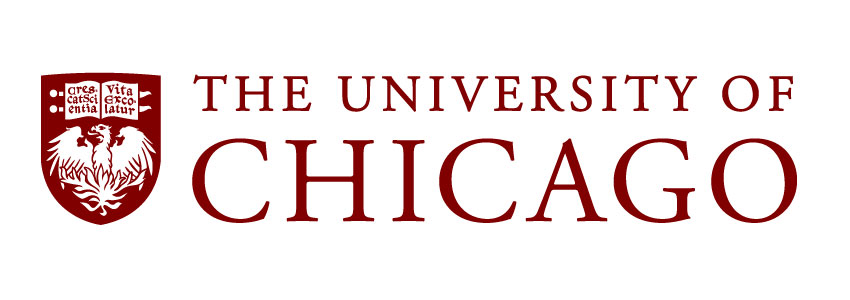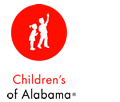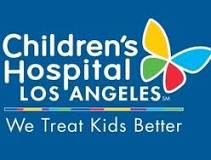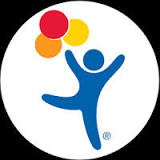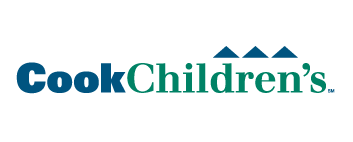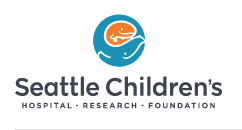Induction Therapy Including 131 I-MIBG and Chemotherapy in Treating Patients With Newly Diagnosed High-Risk Neuroblastoma Undergoing Stem Cell Transplant, Radiation Therapy, and Maintenance Therapy With Isotretinoin
| Status: | Completed |
|---|---|
| Conditions: | Brain Cancer |
| Therapuetic Areas: | Oncology |
| Healthy: | No |
| Age Range: | 1 - 30 |
| Updated: | 11/8/2017 |
| Start Date: | October 2010 |
| End Date: | September 28, 2016 |
A COG Pilot Study of Intensive Induction Chemotherapy and 131I-MIBG Followed by Myeloablative Busulfan/Melphalan (Bu/Mel) for Newly Diagnosed High-Risk Neuroblastoma
This clinical trial is studying induction therapy followed by meta-iodobenzylguanidine (MIBG)
labeled with iodine-131 and chemotherapy in treating patients with newly diagnosed high-risk
neuroblastoma undergoing stem cell transplant, radiation therapy, and maintenance therapy
with isotretinoin. Radioisotope therapy, such as MIBG labeled with iodine-131, releases
radiation that kills tumor cells. Drugs used in chemotherapy, such as cisplatin, etoposide,
busulfan, and melphalan, work in different ways to stop the growth of tumor cells, either by
killing the cells or by stopping them from dividing. A peripheral stem cell transplant can
replace blood-forming cells that are damaged by MIBG labeled with iodine-131 and
chemotherapy.
labeled with iodine-131 and chemotherapy in treating patients with newly diagnosed high-risk
neuroblastoma undergoing stem cell transplant, radiation therapy, and maintenance therapy
with isotretinoin. Radioisotope therapy, such as MIBG labeled with iodine-131, releases
radiation that kills tumor cells. Drugs used in chemotherapy, such as cisplatin, etoposide,
busulfan, and melphalan, work in different ways to stop the growth of tumor cells, either by
killing the cells or by stopping them from dividing. A peripheral stem cell transplant can
replace blood-forming cells that are damaged by MIBG labeled with iodine-131 and
chemotherapy.
PRIMARY OBJECTIVE:
I. To assess the feasibility of treating high-risk neuroblastoma patients, age 365 days - 30
years, with a) an induction block of meta-iodobenzylguanidine labeled with iodine-131
(131I-MIBG [iobenguane I 131]) delivered after multi-agent chemotherapy, and b)
post-induction busulfan/melphalan (Bu/Mel) consolidation therapy.
SECONDARY OBJECTIVES:
I. To assess the tolerability of treating high-risk neuroblastoma patients, age 365 days - 30
years, with a) an induction block of 131I-MIBG therapy delivered after multi-agent
chemotherapy, and b) the tolerability of receiving post-induction Bu/Mel consolidation
therapy with autologous stem-cell rescue (ASCR), and local radiation therapy.
TERTIARY OBJECTIVES:
I. To assess the response rate after a regimen of induction chemotherapy and 131I-MIBG and
after a consolidation regimen of Bu/Mel with ASCR and local radiation therapy.
II. To describe the relationship of tumor norepinephrine transporter (hNET) expression with
radioiodinated MIBG uptake, at diagnosis as well as with tumor response.
III. To assess the relative reliability of 123 I-MIBG and fludeoxyglucose F-18
(18FDG)-positron emission tomography (PET) imaging in assessment of tumor activity at
diagnosis, and prior to surgical resection.
IV. To compare detectable tumor burden on the pre-surgical resection radioiodinated-MIBG
diagnostic scan and the immediate post-MIBG therapy 131I-MIBG scan.
V. To test for the relationship of occurrence of sinusoidal obstruction syndrome (SOS) to
Bu/Mel or to whole-body radiation dose or delayed radiation clearance due to 131I-MIBG.
VI. To analyze busulfan pharmacokinetics as measured by area under the curve (AUC) and relate
exposure to SOS incidence.
OUTLINE:
INDUCTION CHEMOTHERAPY: Patients receive 5 courses of induction therapy.
Courses 1-2: Patients receive cyclophosphamide intravenously (IV) over 15-30 minutes and
topotecan hydrochloride IV over 30 minutes on days 1-5. Patients undergo peripheral blood
stem cell (PBSC) collection after course 2.
Course 3 and 5: Patients receive cisplatin IV over 1 hour on days 1-4 and etoposide phosphate
IV over 1-2 hours on days 1-3. Patients undergo surgery to remove remaining tumor following
course 5.
Course 4: Patients receive cyclophosphamide IV over 1-6 hours on days 1-2 and vincristine
sulfate IV over 1 minute and doxorubicin hydrochloride IV over 24 hours on days 1-3.
Treatment repeats every 21 days for a total of 5 courses in the absence of disease
progression or unacceptable toxicity. Patients without progressive disease proceed to
iobenguane I 131 induction therapy beginning 3-6 weeks after course 5. Patients receive
iobenguane I 131 IV over 90-120 minutes on day 1.
SURGERY: Patients undergo surgery after course 4 or before consolidation therapy.
CONSOLIDATION THERAPY: Within 10-12 weeks from the date of iobenguane I 131 infusion,
patients receive busulfan IV over 2 hours every 6 hours on days -6 to -3 and melphalan IV on
day -1.
AUTOLOGOUS STEM CELL RESCUE: Patients undergo infusion of PBSC on day 0.
RADIOTHERAPY: Beginning no sooner than 42 days after peripheral blood stem cell infusion,
patients undergo 12 fractions of external-beam radiotherapy (2 dimensional [D], 3D-conformal,
or intensity-modulated) to all areas of residual disease, primary tumor site, and involved
nodal disease.
MAINTENANCE THERAPY: Beginning 66 days after transplantation, patients receive isotretinoin
orally (PO) twice daily (BID) on days 1-14. Treatment repeats every 28 days for 6 courses.
After completion of study therapy, patients are followed up every 3 months for 1 year, every
6 months for 4 years, and then annually for 5 years.
I. To assess the feasibility of treating high-risk neuroblastoma patients, age 365 days - 30
years, with a) an induction block of meta-iodobenzylguanidine labeled with iodine-131
(131I-MIBG [iobenguane I 131]) delivered after multi-agent chemotherapy, and b)
post-induction busulfan/melphalan (Bu/Mel) consolidation therapy.
SECONDARY OBJECTIVES:
I. To assess the tolerability of treating high-risk neuroblastoma patients, age 365 days - 30
years, with a) an induction block of 131I-MIBG therapy delivered after multi-agent
chemotherapy, and b) the tolerability of receiving post-induction Bu/Mel consolidation
therapy with autologous stem-cell rescue (ASCR), and local radiation therapy.
TERTIARY OBJECTIVES:
I. To assess the response rate after a regimen of induction chemotherapy and 131I-MIBG and
after a consolidation regimen of Bu/Mel with ASCR and local radiation therapy.
II. To describe the relationship of tumor norepinephrine transporter (hNET) expression with
radioiodinated MIBG uptake, at diagnosis as well as with tumor response.
III. To assess the relative reliability of 123 I-MIBG and fludeoxyglucose F-18
(18FDG)-positron emission tomography (PET) imaging in assessment of tumor activity at
diagnosis, and prior to surgical resection.
IV. To compare detectable tumor burden on the pre-surgical resection radioiodinated-MIBG
diagnostic scan and the immediate post-MIBG therapy 131I-MIBG scan.
V. To test for the relationship of occurrence of sinusoidal obstruction syndrome (SOS) to
Bu/Mel or to whole-body radiation dose or delayed radiation clearance due to 131I-MIBG.
VI. To analyze busulfan pharmacokinetics as measured by area under the curve (AUC) and relate
exposure to SOS incidence.
OUTLINE:
INDUCTION CHEMOTHERAPY: Patients receive 5 courses of induction therapy.
Courses 1-2: Patients receive cyclophosphamide intravenously (IV) over 15-30 minutes and
topotecan hydrochloride IV over 30 minutes on days 1-5. Patients undergo peripheral blood
stem cell (PBSC) collection after course 2.
Course 3 and 5: Patients receive cisplatin IV over 1 hour on days 1-4 and etoposide phosphate
IV over 1-2 hours on days 1-3. Patients undergo surgery to remove remaining tumor following
course 5.
Course 4: Patients receive cyclophosphamide IV over 1-6 hours on days 1-2 and vincristine
sulfate IV over 1 minute and doxorubicin hydrochloride IV over 24 hours on days 1-3.
Treatment repeats every 21 days for a total of 5 courses in the absence of disease
progression or unacceptable toxicity. Patients without progressive disease proceed to
iobenguane I 131 induction therapy beginning 3-6 weeks after course 5. Patients receive
iobenguane I 131 IV over 90-120 minutes on day 1.
SURGERY: Patients undergo surgery after course 4 or before consolidation therapy.
CONSOLIDATION THERAPY: Within 10-12 weeks from the date of iobenguane I 131 infusion,
patients receive busulfan IV over 2 hours every 6 hours on days -6 to -3 and melphalan IV on
day -1.
AUTOLOGOUS STEM CELL RESCUE: Patients undergo infusion of PBSC on day 0.
RADIOTHERAPY: Beginning no sooner than 42 days after peripheral blood stem cell infusion,
patients undergo 12 fractions of external-beam radiotherapy (2 dimensional [D], 3D-conformal,
or intensity-modulated) to all areas of residual disease, primary tumor site, and involved
nodal disease.
MAINTENANCE THERAPY: Beginning 66 days after transplantation, patients receive isotretinoin
orally (PO) twice daily (BID) on days 1-14. Treatment repeats every 28 days for 6 courses.
After completion of study therapy, patients are followed up every 3 months for 1 year, every
6 months for 4 years, and then annually for 5 years.
Inclusion Criteria:
- Patients have a diagnosis of neuroblastoma (International Classification of Diseases
for Oncology [ICD-O] morphology 9500/3) or ganglioneuroblastoma verified by histology
or demonstration of clumps of tumor cells in bone marrow with elevated urinary
catecholamine metabolites; patients with the following disease stages at diagnosis are
eligible, if they meet the other specified criteria:
- Patients with newly diagnosed neuroblastoma with International Neuroblastoma
Staging System (INSS) stage 4 are eligible with the following:
- v-MYC myelocytomatosis viral related oncogene, neuroblastoma derived (avian)
(MYCN) amplification (> 4-fold increase in MYCN signals as compared to
reference signals) and age >= 365 days regardless of additional biologic
features
- Age > 18 months (> 547 days) regardless of biologic features
- Age 12-18 months (365-547 days) with any of the following 3 unfavorable
biologic features (MYCN amplification, unfavorable pathology and/or
deoxyribonucleic acid [DNA] index = 1) or any biologic feature that is
indeterminant/unsatisfactory/unknown
- Patients with newly diagnosed neuroblastoma with INSS stage 3 are eligible with
the following:
- MYCN amplification (> 4-fold increase in MYCN signals as compared to
reference signals), and age >= 365 days, regardless of additional biologic
features
- Age > 18 months (> 547 days) with unfavorable pathology, regardless of MYCN
status
- Patients with newly diagnosed INSS stage 2a/2b with MYCN amplification (> 4-fold
increase in MYCN signals as compared to reference signals) and age >= 365 days,
regardless of additional biologic features
- Patients >= 365 days initially diagnosed with: INSS stage 1, 2, 4S who progressed
to a stage 4 without interval chemotherapy; these patients must have been
enrolled on ANBL00B1; it is to be noted that study enrollment must occur within 4
weeks of progression to stage 4 for INSS stage 1, 2, 4S
- Patients must have had no prior systemic therapy except for localized emergency
radiation to sites of life-threatening or function-threatening disease and/or no more
than 1 cycle of chemotherapy per low- or intermediate-risk neuroblastoma therapy
(P9641, A3961, ANBL0531) prior to determination of MYCN amplification and histology
- Creatinine clearance or radioisotope glomerular filtration rate (GFR) >= 70
mL/min/1.73 m^2 OR serum creatinine based on age and/or gender as follows:
- 0.6 mg/dL (1 to < 2 years of age)
- 0.8 mg/dL (2 to < 6 years of age)
- 1.0 mg/dL (6 to < 10 years of age)
- 1.2 mg/dL (10 to < 13 years of age)
- 1.5 mg/dL (male) or 1.4 mg/dL (female) (13 to < 16 years of age)
- 1.7 mg/dL (male) or 1.4 mg/dL (female) ( >= 16 years of age)
- Total bilirubin =< 1.5 x upper limit of normal (ULN) for age
- Serum glutamic oxaloacetic transaminase (SGOT) (aspartate aminotransferase [AST]) or
serum glutamate pyruvate transaminase (SGPT) (alanine aminotransferase [ALT]) < 10 x
ULN for age
- Shortening fraction >= 27% by echocardiogram or
- Ejection fraction >= 50% by radionuclide evaluation
- No known contraindication to peripheral blood stem cell (PBSC) collection; examples of
contraindications might be a weight or size less than the collecting institution finds
feasible, or a physical condition that would limit the ability of the child to undergo
apheresis catheter placement (if necessary) and/or the apheresis procedure
- All patients and/or their parents or legal guardians must sign a written informed
consent
- All institutional, Food and Drug Administration (FDA), and National Cancer Institute
(NCI) requirements for human studies must be met
Exclusion Criteria:
- Females of childbearing potential must have a negative pregnancy test; patients of
childbearing potential must agree to use an effective birth control method
- Female patients who are lactating must agree to stop breast-feeding
- Patients that are 12-18 months of age with INSS stage 4 and all 3 favorable biologic
features (i.e., non-amplified MYCN, favorable pathology, and DNA index > 1) are not
eligible
- Patients are not eligible if they have received local radiation which includes any of
the following: 1200 centigray (cGy) to more than 33% of both kidneys (patient must
have at least 1 kidney that has not exceeded the dose/volume of radiation listed) or
1800 cGy to more than 30% of liver and/or 900 cGy to more than 50% of liver; emergency
local irradiation is allowed prior to study entry, provided the patient still meets
eligibility criteria
We found this trial at
23
sites
University of Chicago One of the world's premier academic and research institutions, the University of...
Click here to add this to my saved trials
Children's Hospital of Alabama Children
Click here to add this to my saved trials
University of Alabama at Birmingham The University of Alabama at Birmingham (UAB) traces its roots...
Click here to add this to my saved trials
3333 Burnet Avenue # Mlc3008
Cincinnati, Ohio 45229
Cincinnati, Ohio 45229
1-513-636-4200

Cincinnati Children's Hospital Medical Center Patients and families from across the region and around the...
Click here to add this to my saved trials
Connecticut Children's Medical Center Connecticut Children’s Medical Center is a nationally recognized, 187-bed not-for-profit children’s...
Click here to add this to my saved trials
Childrens Hospital Los Angeles Children's Hospital Los Angeles is a 501(c)(3) nonprofit hospital for pediatric...
Click here to add this to my saved trials
Children's Hospital of Philadelphia Since its start in 1855 as the nation's first hospital devoted...
Click here to add this to my saved trials
C S Mott Children's Hospital Behind the doors of C.S. Mott Children's Hospital there exist...
Click here to add this to my saved trials
Children's Hospital Colorado At Children's Hospital Colorado, we see more, treat more and heal more...
Click here to add this to my saved trials
Dana-Farber Cancer Institute Since it’s founding in 1947, Dana-Farber has been committed to providing adults...
Click here to add this to my saved trials
Univ of North Carolina Carolina’s vibrant people and programs attest to the University’s long-standing place...
Click here to add this to my saved trials
171 Ashley Avenue
Charleston, South Carolina 29425
Charleston, South Carolina 29425
843-792-1414

Medical University of South Carolina The Medical University of South Carolina (MUSC) has grown from...
Click here to add this to my saved trials
University of Texas Southwestern Medical Center UT Southwestern is an academic medical center, world-renowned for...
Click here to add this to my saved trials
Duke Univ Med Ctr As a world-class academic and health care system, Duke Medicine strives...
Click here to add this to my saved trials
Cook Children's Medical Center Cook Children's Health Care System is a not-for-profit, nationally recognized pediatric...
Click here to add this to my saved trials
600 Highland Ave
Madison, Wisconsin 53792
Madison, Wisconsin 53792
(608) 263-6400

University of Wisconsin Hospital and Clinics UW Health strives to meet the health needs of...
Click here to add this to my saved trials
Midwest Children's Cancer Center The Medical College of Wisconsin Cancer Center is dedicated to providing...
Click here to add this to my saved trials
Phoenix Children's Hospital Phoenix Children's Hospital has provided hope, healing, and the best healthcare for...
Click here to add this to my saved trials
Click here to add this to my saved trials
Click here to add this to my saved trials
Seattle Children's Hospital Seattle Children’s Hospital specializes in meeting the unique physical, emotional and developmental...
Click here to add this to my saved trials
101 W 8th Ave
Spokane, Washington 99204
Spokane, Washington 99204
(509) 474-3131

Providence Sacred Heart Medical Center & Children's Hospital When Mother Joseph and the Sisters of...
Click here to add this to my saved trials
Click here to add this to my saved trials
